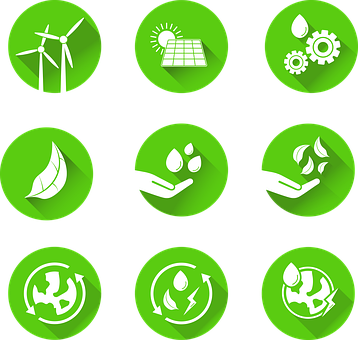Renewable energy present status and future potentials in India: An overview

The World Energy Forum has predicted that fossil-based oil, coal, and gas reserves are likely to get exhausted in less than 10 decades. 79% of the primary energy consumed in the world is accounted by fossil fuels. Whereas 57.7% of this energy is used in the transport sector. These energy resources are diminishing rapidly. Renewable energy is energy derived from regenerative resources. The regenerative resources do not deplete over time.
Advantages of renewable include:
- It offers our planet to reduce carbon emissions in the atmosphere.
- Cleans the air.
- Puts civilization on a more sustainable footing.
- Improves energy security.
- Spur Economic development.

Keywords: renewable energy, fossil fuels, energy security, producers
About 70% of total greenhouse emissions are related to energy. The main cause is the burning of fossil fuels. This leads to various impacts on the environment such as climate change. Renewable energy resources may also help in mitigating climate change.
Sources of renewable energies include:
- Biomass
- Wind energy
- Solar energy
- Hydropower
- Geothermal energy
Renewable energy in India:
India's population is more than 1028 million and it is growing at an annual rate of 1.58%. As the fossil fuel reserves are depleting, India will face energy shortages in near future. This will lead to high energy prices and will threaten energy security. For the proper sustainable development of India, the use of RES and technologies is becoming vital.
India is determined to be one of the world's leading clean energy producers. The government of India has made several provisions and established several agencies for achieving this goal.
Future of renewable energy in India:
Various government and private organizations such as MNRE, Centre for Wind Energy Technology, Universities, IITs, NITs, Indian Oil Corporation Ltd. (IOCL), and The Energy Resource Institute(TERI) are involved in the R and D of renewable energy sources.
It is expected that the contribution of power generation from renewable energy alone will be to the extent of 60,000 MW by the year 2031-2032. By this year, renewables will act as the key driver in the social inclusion of the poor in the development process. Over the next 25 years, the modest assessment of investments in the renewable energy sector will be about Rs. 300,000 crores.
Current energy policies:
- National Electricity policy,2005.
- The Electricity Act 2003
- Tariff Policy, 2006
- National Rural Electrification Policies,2006
- Integrated Energy Policy Report 2006
Initiatives and steps for delivery and outreach:
- District Advisory Committees(DACs)
- Akshay Urja Shops
- Energy parks
- Rajiv Gandhi Akshay Urja Divas
- Akshay Urja Newsletter
- Renewable energy clubs
Story Source:
Materials provided by Innovation and Green Development. The original text of this story is licensed under a Creative Commons License. Note: Content may be edited for style and length.
Journal Reference:
- Abbasi et al., 2011
- T. Abbasi, M. Premalatha, S. AbbasiThe return to renewables: Will it help in global warming control?Renewable and Sustainable Energy Reviews, 15 (2011), pp. 891-894, 10.1016/j.rser.2010.09.048
- Adedoyin et al., 2020
- F.F. Adedoyin, M.I. Gumede, F.V. Bekun, M.U. Etokakpan, D. Balsalobre-lorenteModelling coal rent, economic growth and CO2 emissions: Does regulatory quality matter in BRICS economies?Science of The Total Environment, 710 (2020), Article 136284
- Alper and Oguz, 2016
- A. Alper, O. OguzThe role of renewable energy consumption in economic growth: Evidence from asymmetric causalityRenewable and Sustainable Energy Reviews, 60 (2016), pp. 953-959
- Amjith and Bavanish, 2022
- L.R. Amjith, B. BavanishA review on biomass and wind as renewable energy for sustainable environmentChemosphere, 293 (2022), Article 133579

0 Comments